Pattaya Mail
-
PBID: 0001005000000049
-
1 χρήστες τους αρέσει
-
973 Δημοσιεύσεις
-
2 τις φωτογραφίες μου
-
Videos
-
Προεπισκόπηση
-
News
© 2025 พัทยาโซเชียล Pattaya.Social
 Greek
Greek
Πρόσφατες ενημερώσεις
-
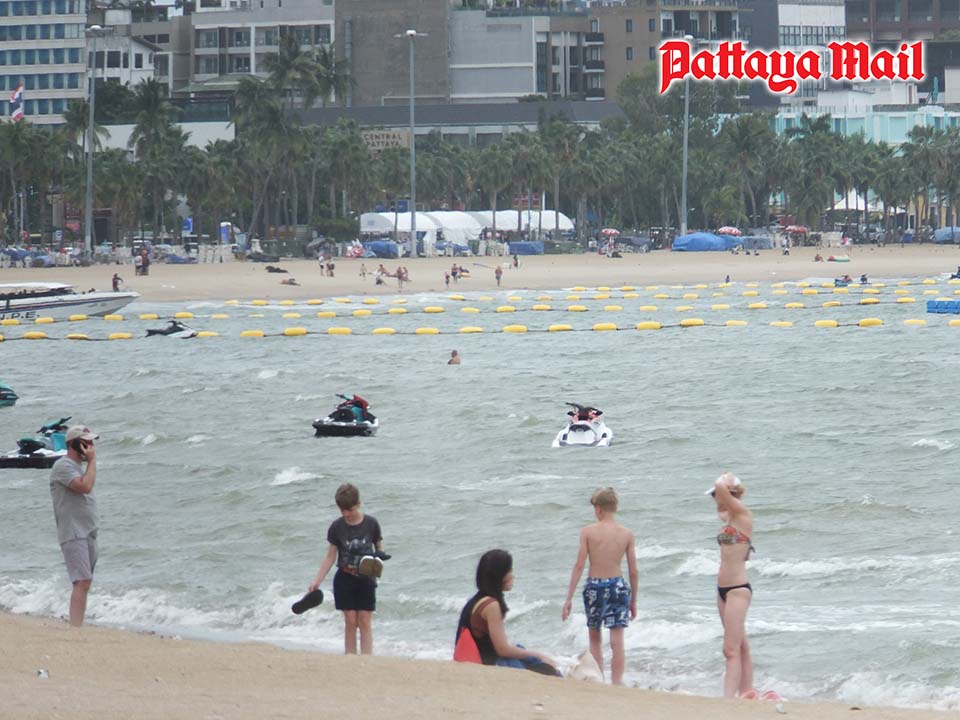 WWW.PATTAYAMAIL.COMPattaya Weather Forecast: Scattered Storms, Steady TourismRain on the Radar — but scattered showers can’t dampen Pattaya or Bangkok’s buzz. (Photo by Jetsada Homklin) PATTAYA, Thailand – While upper Thailand braces for heavy rain and flash flooding, Pattaya is seeing only scattered showers over the next couple of days — enough to darken the skies but not the city’s famously lively spirit. According to the Thai Meteorological Department, intense rainfall continues across northern and northeastern provinces such as Chiang Rai, Phayao, Nan, Udon Thani, and Nakhon Phanom. Residents in those areas are being warned to watch for flash floods, runoff, and river overflows, particularly near foothills and waterways. The downpour is being driven by a monsoon trough and a low-pressure system over upper Vietnam, coupled with a moderate southwest monsoon covering the Andaman Sea and the Gulf of Thailand. In the East — including Pattaya — about 70% of the area is expected to experience thunderstorms, with isolated heavy rain possible. Wave heights in the upper Gulf could reach 2 meters or more during storms, and small boats are urged to stay ashore during thunderstorms. Pattaya’s temperatures will hover between 27–32°C, with high humidity making it feel even warmer. Meanwhile in Bangkok, 60% of the metropolitan area is forecast to see rain, with some areas likely to experience heavy downpours. The capital remains hot and humid in between showers, with temperatures peaking around 34°C. Commuters are advised to plan ahead as sudden rainfall could affect traffic flow and low-lying roads. Despite the scattered rain, both Pattaya and Bangkok continue to buzz with life. In Pattaya, tourists still flock to the beach, night markets, and malls, while in Bangkok, temples, cafés, and shopping centers remain busy. Raincoats, umbrellas, and backup plans are all part of the seasonal rhythm — but neither city seems ready to slow down. As the skies shift, Thailand’s favorite urban and seaside playgrounds carry on — resilient, rain-slicked, and as vibrant as ever.0 Σχόλια 0 Μοιράστηκε 24 ViewsΠαρακαλούμε συνδέσου στην Κοινότητά μας για να δηλώσεις τι σου αρέσει, να σχολιάσεις και να μοιραστείς με τους φίλους σου!
WWW.PATTAYAMAIL.COMPattaya Weather Forecast: Scattered Storms, Steady TourismRain on the Radar — but scattered showers can’t dampen Pattaya or Bangkok’s buzz. (Photo by Jetsada Homklin) PATTAYA, Thailand – While upper Thailand braces for heavy rain and flash flooding, Pattaya is seeing only scattered showers over the next couple of days — enough to darken the skies but not the city’s famously lively spirit. According to the Thai Meteorological Department, intense rainfall continues across northern and northeastern provinces such as Chiang Rai, Phayao, Nan, Udon Thani, and Nakhon Phanom. Residents in those areas are being warned to watch for flash floods, runoff, and river overflows, particularly near foothills and waterways. The downpour is being driven by a monsoon trough and a low-pressure system over upper Vietnam, coupled with a moderate southwest monsoon covering the Andaman Sea and the Gulf of Thailand. In the East — including Pattaya — about 70% of the area is expected to experience thunderstorms, with isolated heavy rain possible. Wave heights in the upper Gulf could reach 2 meters or more during storms, and small boats are urged to stay ashore during thunderstorms. Pattaya’s temperatures will hover between 27–32°C, with high humidity making it feel even warmer. Meanwhile in Bangkok, 60% of the metropolitan area is forecast to see rain, with some areas likely to experience heavy downpours. The capital remains hot and humid in between showers, with temperatures peaking around 34°C. Commuters are advised to plan ahead as sudden rainfall could affect traffic flow and low-lying roads. Despite the scattered rain, both Pattaya and Bangkok continue to buzz with life. In Pattaya, tourists still flock to the beach, night markets, and malls, while in Bangkok, temples, cafés, and shopping centers remain busy. Raincoats, umbrellas, and backup plans are all part of the seasonal rhythm — but neither city seems ready to slow down. As the skies shift, Thailand’s favorite urban and seaside playgrounds carry on — resilient, rain-slicked, and as vibrant as ever.0 Σχόλια 0 Μοιράστηκε 24 ViewsΠαρακαλούμε συνδέσου στην Κοινότητά μας για να δηλώσεις τι σου αρέσει, να σχολιάσεις και να μοιραστείς με τους φίλους σου! -
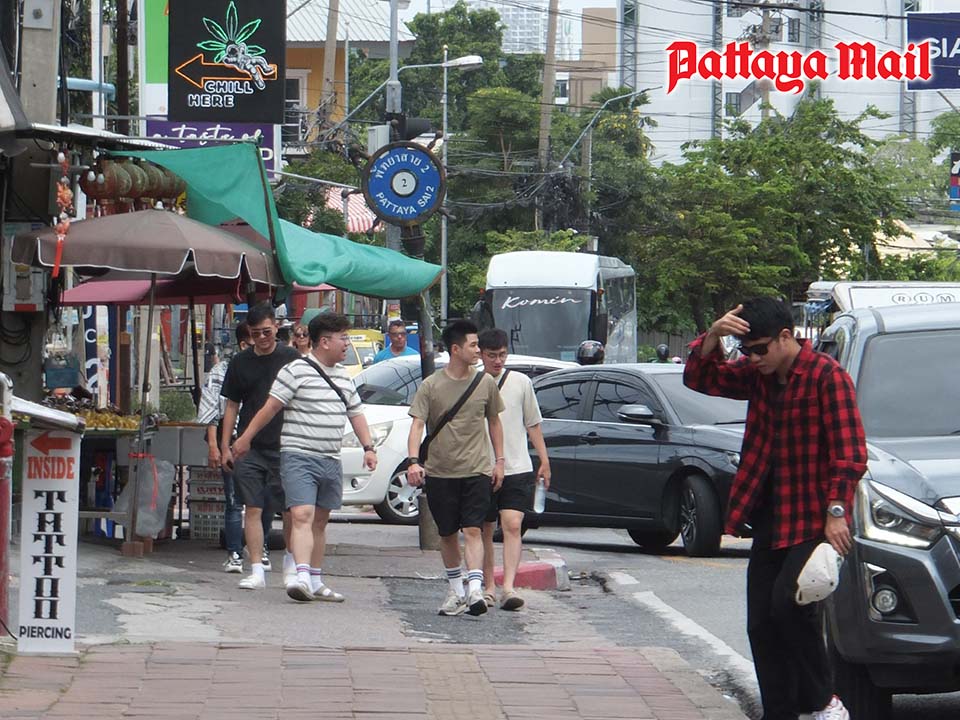 WWW.PATTAYAMAIL.COMCeasefire spurs hope for tourism and trade in Pattaya, border regionsTourism leaders in Pattaya welcome easing border tensions, seeing stable borders and domestic stimulus as crucial pillars for sustained recovery and renewed confidence. (Photo by Jetsada Homklin) PATTAYA, Thailand – The recently agreed ceasefire between Thailand and Cambodia is being welcomed by tourism and business leaders as a positive step toward restoring confidence in border trade and safeguarding Thailand’s image as a safe and reliable destination — especially in key tourism hubs like Pattaya. The ceasefire, announced on July 28 during ASEAN-hosted talks in Putrajaya, Malaysia, is set to take effect at midnight and includes plans for military-level coordination and reopening dialogue channels between the two countries. Business leaders and tourism operators see this as an encouraging sign for regional stability. While the border tensions sparked concern earlier this month, Mr. Chai Arunanonchai, Chairman of the Tourism Council of Thailand (TCT), said the incident has had minimal impact on international tourism in core destinations such as Pattaya, Phuket, Bangkok, and Chiang Mai. “This conflict is localized and short-term,” Mr. Chai said, “and we believe affected areas will recover quickly. The broader tourism ecosystem remains strong.” In Pattaya, one of Thailand’s most visited seaside destinations, hotels and local businesses report steady tourist flows despite recent rains and regional news. The Thai Meteorological Department forecasts scattered showers this week but nothing severe enough to disrupt beach visits or nightlife. Local sentiment remains upbeat, with business owners expressing optimism that the ceasefire could lead to the reopening of key border crossings, revitalizing cross-border commerce and tourism packages that were previously halted due to safety concerns. Mr. Chai also urged media to communicate a balanced, fact-based picture of Thailand to global audiences, warning that misinformation or exaggerated headlines could hurt the country’s tourism reputation. TCT Chairman, Chai Arunanonchai, emphasizes the importance of restraint, regional cooperation, and sustained dialogue following the Thailand-Cambodia ceasefire agreement, urging all sides to stay committed to peaceful resolution and ASEAN unity. Despite earlier concerns — including a drop in Chinese visitors linked to safety rumors and global economic slowdowns — Thailand has welcomed over 18 million foreign tourists in the first half of 2025, nearly matching last year’s numbers. “Confidence remains high in core markets,” said Mr. Jirayut Jarukittiworakan, Secretary-General of the TCT, noting that while some regions have seen dips, other markets are helping offset the losses. “The Chinese market is stabilizing, and we expect a surge during China’s National Day holiday.” However, the TCT reports that overall business confidence among tourism operators dropped sharply in Q2/2025, falling to 70 from 83 in Q1. Revenue also declined, with operators calling for renewed stimulus efforts, including a revival of the popular “Khon La Khrueng” (Half-Half) co-payment campaign. A proposed domestic tourism campaign — “Thai Travel Thai” — is in the works to boost off-season demand, especially in regional areas. Border Trade and Tourism Await Next Moves With military leaders from both countries set to meet on July 29 and a General Border Committee meeting planned for August 4, business communities in Sa Kaeo, Surin, and other eastern provinces are watching closely. The hope is that improved coordination will lead to the safe reopening of key border checkpoints — a crucial channel for day-trippers, shoppers, and cross-border tour groups. “Stability means confidence — and confidence is everything in tourism,” Mr. Chai emphasized. As tensions ease and regional cooperation resumes, industry leaders believe Thailand can maintain momentum — even through the rainy season — with Pattaya, Bangkok, and other top destinations continuing to shine.0 Σχόλια 0 Μοιράστηκε 24 Views
WWW.PATTAYAMAIL.COMCeasefire spurs hope for tourism and trade in Pattaya, border regionsTourism leaders in Pattaya welcome easing border tensions, seeing stable borders and domestic stimulus as crucial pillars for sustained recovery and renewed confidence. (Photo by Jetsada Homklin) PATTAYA, Thailand – The recently agreed ceasefire between Thailand and Cambodia is being welcomed by tourism and business leaders as a positive step toward restoring confidence in border trade and safeguarding Thailand’s image as a safe and reliable destination — especially in key tourism hubs like Pattaya. The ceasefire, announced on July 28 during ASEAN-hosted talks in Putrajaya, Malaysia, is set to take effect at midnight and includes plans for military-level coordination and reopening dialogue channels between the two countries. Business leaders and tourism operators see this as an encouraging sign for regional stability. While the border tensions sparked concern earlier this month, Mr. Chai Arunanonchai, Chairman of the Tourism Council of Thailand (TCT), said the incident has had minimal impact on international tourism in core destinations such as Pattaya, Phuket, Bangkok, and Chiang Mai. “This conflict is localized and short-term,” Mr. Chai said, “and we believe affected areas will recover quickly. The broader tourism ecosystem remains strong.” In Pattaya, one of Thailand’s most visited seaside destinations, hotels and local businesses report steady tourist flows despite recent rains and regional news. The Thai Meteorological Department forecasts scattered showers this week but nothing severe enough to disrupt beach visits or nightlife. Local sentiment remains upbeat, with business owners expressing optimism that the ceasefire could lead to the reopening of key border crossings, revitalizing cross-border commerce and tourism packages that were previously halted due to safety concerns. Mr. Chai also urged media to communicate a balanced, fact-based picture of Thailand to global audiences, warning that misinformation or exaggerated headlines could hurt the country’s tourism reputation. TCT Chairman, Chai Arunanonchai, emphasizes the importance of restraint, regional cooperation, and sustained dialogue following the Thailand-Cambodia ceasefire agreement, urging all sides to stay committed to peaceful resolution and ASEAN unity. Despite earlier concerns — including a drop in Chinese visitors linked to safety rumors and global economic slowdowns — Thailand has welcomed over 18 million foreign tourists in the first half of 2025, nearly matching last year’s numbers. “Confidence remains high in core markets,” said Mr. Jirayut Jarukittiworakan, Secretary-General of the TCT, noting that while some regions have seen dips, other markets are helping offset the losses. “The Chinese market is stabilizing, and we expect a surge during China’s National Day holiday.” However, the TCT reports that overall business confidence among tourism operators dropped sharply in Q2/2025, falling to 70 from 83 in Q1. Revenue also declined, with operators calling for renewed stimulus efforts, including a revival of the popular “Khon La Khrueng” (Half-Half) co-payment campaign. A proposed domestic tourism campaign — “Thai Travel Thai” — is in the works to boost off-season demand, especially in regional areas. Border Trade and Tourism Await Next Moves With military leaders from both countries set to meet on July 29 and a General Border Committee meeting planned for August 4, business communities in Sa Kaeo, Surin, and other eastern provinces are watching closely. The hope is that improved coordination will lead to the safe reopening of key border checkpoints — a crucial channel for day-trippers, shoppers, and cross-border tour groups. “Stability means confidence — and confidence is everything in tourism,” Mr. Chai emphasized. As tensions ease and regional cooperation resumes, industry leaders believe Thailand can maintain momentum — even through the rainy season — with Pattaya, Bangkok, and other top destinations continuing to shine.0 Σχόλια 0 Μοιράστηκε 24 Views -
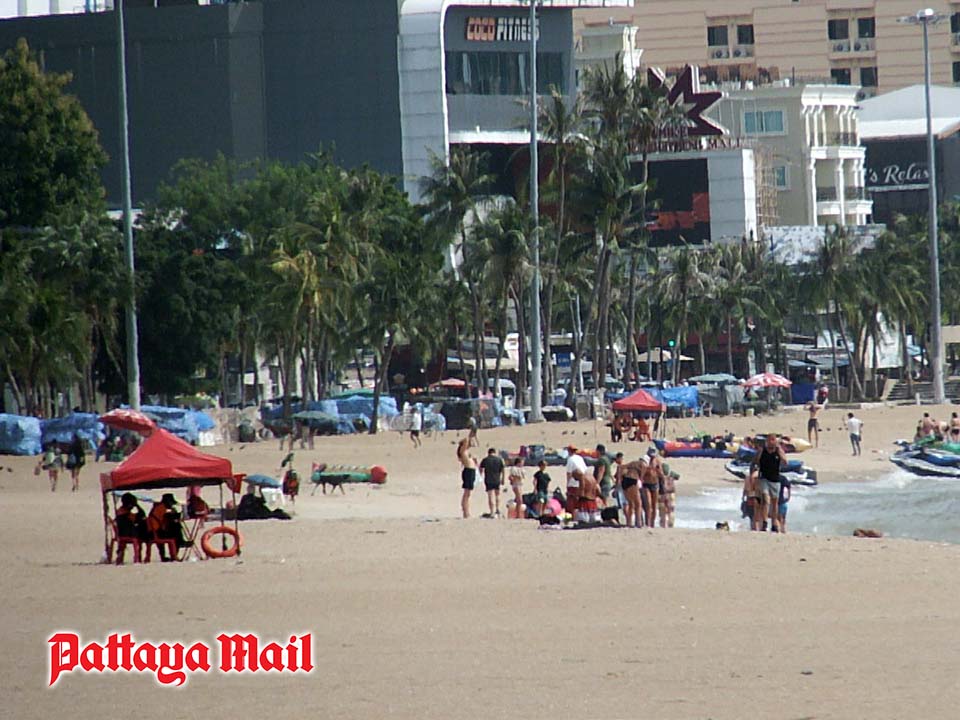 WWW.PATTAYAMAIL.COMTensions at border, Pattaya holds steady — experts say Cambodia’s tourism hit harder, casinos crippledThailand’s top tourist cities — Bangkok, Pattaya, Chiang Mai, and Phuket — remain far from the border conflict, continuing to attract visitors and generate strong tourism income, supported by the nation’s comprehensive military strength. (Photo by Jetsada Homklin) PATTAYA, Thailand – Foreign policy analysts and international financial experts have weighed in on the most intense Thai-Cambodian conflict in 14 years, warning of its uneven impact on tourism. While both countries face fallout, Cambodia is bearing the heavier burden — especially along its once-bustling border zones. According to geopolitical scholars and economic think tanks, the skirmishes have not only triggered travel warnings from foreign governments, but also dented international confidence — at a time when both nations are depending heavily on tourism to support post-pandemic recovery. Despite Thailand being more frequently associated with the conflict in international headlines, data suggests Cambodia’s tourism industry is suffering more severely. Unlike Thailand, Cambodia lacks robust tourism promotion agencies, large fiscal reserves, and strong public welfare systems to cushion the shock. One major blow: the sharp decline in Thai nationals crossing over to gamble at casinos along the Cambodian side of the border — a critical source of income for border economies like Poipet. These crossings have halted almost entirely since border closures took effect, leading to severe revenue losses. In contrast, Thailand’s main tourism hubs — such as Bangkok, Pattaya, Chiang Mai, and Phuket — are far removed from the conflict zone. Bangkok is situated over 260 kilometers from the affected border region, while Pattaya lies on the opposite eastern coastline, and Phuket is in the south along the Andaman coast. These cities continue to generate the highest tourist income in the country, according to data from The Vacationer, a global travel platform. “Thailand has both core and casual tourist bases,” said one analyst, “while Cambodia still relies heavily on short-term traffic — much of it from across the border.” Although the conflict has stirred short-term instability, full-scale war is considered unlikely. Thailand also holds a significant advantage in military power across all dimensions. Economic and political incentives on both sides continue to outweigh the desire for prolonged confrontation. However, analysts caution that broader regional tensions — including disputes in the South China Sea and Myanmar’s internal crisis — could complicate de-escalation efforts. In terms of GDP contribution, Thailand’s tourism sector makes up around 12% of the national economy, supported by over 35 million international visitors in 2024. Cambodia’s tourism share stands at about 9% of GDP, with just 6.7 million foreign arrivals. The disparity in both scale and resilience means that while both nations face headwinds, Cambodia may have far fewer tools to weather the storm.0 Σχόλια 0 Μοιράστηκε 25 Views
WWW.PATTAYAMAIL.COMTensions at border, Pattaya holds steady — experts say Cambodia’s tourism hit harder, casinos crippledThailand’s top tourist cities — Bangkok, Pattaya, Chiang Mai, and Phuket — remain far from the border conflict, continuing to attract visitors and generate strong tourism income, supported by the nation’s comprehensive military strength. (Photo by Jetsada Homklin) PATTAYA, Thailand – Foreign policy analysts and international financial experts have weighed in on the most intense Thai-Cambodian conflict in 14 years, warning of its uneven impact on tourism. While both countries face fallout, Cambodia is bearing the heavier burden — especially along its once-bustling border zones. According to geopolitical scholars and economic think tanks, the skirmishes have not only triggered travel warnings from foreign governments, but also dented international confidence — at a time when both nations are depending heavily on tourism to support post-pandemic recovery. Despite Thailand being more frequently associated with the conflict in international headlines, data suggests Cambodia’s tourism industry is suffering more severely. Unlike Thailand, Cambodia lacks robust tourism promotion agencies, large fiscal reserves, and strong public welfare systems to cushion the shock. One major blow: the sharp decline in Thai nationals crossing over to gamble at casinos along the Cambodian side of the border — a critical source of income for border economies like Poipet. These crossings have halted almost entirely since border closures took effect, leading to severe revenue losses. In contrast, Thailand’s main tourism hubs — such as Bangkok, Pattaya, Chiang Mai, and Phuket — are far removed from the conflict zone. Bangkok is situated over 260 kilometers from the affected border region, while Pattaya lies on the opposite eastern coastline, and Phuket is in the south along the Andaman coast. These cities continue to generate the highest tourist income in the country, according to data from The Vacationer, a global travel platform. “Thailand has both core and casual tourist bases,” said one analyst, “while Cambodia still relies heavily on short-term traffic — much of it from across the border.” Although the conflict has stirred short-term instability, full-scale war is considered unlikely. Thailand also holds a significant advantage in military power across all dimensions. Economic and political incentives on both sides continue to outweigh the desire for prolonged confrontation. However, analysts caution that broader regional tensions — including disputes in the South China Sea and Myanmar’s internal crisis — could complicate de-escalation efforts. In terms of GDP contribution, Thailand’s tourism sector makes up around 12% of the national economy, supported by over 35 million international visitors in 2024. Cambodia’s tourism share stands at about 9% of GDP, with just 6.7 million foreign arrivals. The disparity in both scale and resilience means that while both nations face headwinds, Cambodia may have far fewer tools to weather the storm.0 Σχόλια 0 Μοιράστηκε 25 Views -
 WWW.PATTAYAMAIL.COM‘I tried Vietnam, came back to Pattaya’ — some find out the hard way that cheaper doesn’t mean betterBar chatter vs. real-life choices — As Pattaya’s skyline rises, Vietnam and Cambodia are still ironing out the basics. (Photo by Jetsada Homklin) PATTAYA, Thailand – As Thailand’s tourist hotspots weather tensions near the Cambodian border, Pattaya remains a magnet for longtime expatriates and short-stay thrill-seekers alike. While some online chatter suggests a growing curiosity about Vietnam and Cambodia as alternatives, the contrast between Pattaya’s enduring appeal and its so-called “rivals” tells a more nuanced story. While the bar scene — with its warm smiles and seductive charm — continues to define much of Pattaya’s after-dark identity, life in the city extends far beyond. Many expats point to the variety of lifestyle choices available, especially in areas like Jomtien or East Pattaya (“the Dark Side”), where coffee culture, gyms, and sea breezes complement a more relaxed daily rhythm. Yes, some lament what they see as overdevelopment, ongoing road repairs, and a decline in Jomtien’s former charm. But Pattaya’s ability to blend hustle with comfort still outpaces regional challengers in the eyes of many residents. It’s not just about nightlife — it’s about being 30 minutes from world-class malls, beaches, and global cuisine, all wrapped in a city that never quite stops moving. Meanwhile, Vietnam has emerged as a frequent mention in online forums — often lauded for its lower costs, vibrant local culture, and growing infrastructure. Some expats are indeed relocating there, attracted by a cheaper lifestyle and perhaps fewer restrictions in nightlife zones. However, the comparisons aren’t always favorable. Vietnam lacks a long-term retirement visa and, for many, its 90-day limit is a deal-breaker. Infrastructure gaps, language barriers, and uncertain expat rights add to the list of concerns. While the food and coffee win praise from some, others find local cuisine underwhelming compared to Thailand’s. And despite claims of affordability, Western comforts — from reliable internet to imported groceries — can come at a premium. Cambodia, too, gets mentioned — particularly as a haven for budget-conscious expats or those disillusioned by Pattaya’s rising prices. But with casinos shuttered amid border conflict, and long-term prospects for infrastructure and expat stability still in question, Cambodia remains a limited option for most. More broadly, some observers warn against judging quality of life solely on cost. A cheap beer or a one-night companion might appeal in the short term, but day-to-day living — from healthcare access and immigration security to safety and driving standards — matters far more in the long run. Despite the criticisms — of rising costs, minimum drink quotas for bar staff, and encroaching development — Pattaya still delivers a rare balance of energy, familiarity, and convenience. For those contemplating a move, the real question may not be what Vietnam or Cambodia offers — but whether they can truly replicate what Pattaya has quietly perfected over the years.0 Σχόλια 0 Μοιράστηκε 24 Views
WWW.PATTAYAMAIL.COM‘I tried Vietnam, came back to Pattaya’ — some find out the hard way that cheaper doesn’t mean betterBar chatter vs. real-life choices — As Pattaya’s skyline rises, Vietnam and Cambodia are still ironing out the basics. (Photo by Jetsada Homklin) PATTAYA, Thailand – As Thailand’s tourist hotspots weather tensions near the Cambodian border, Pattaya remains a magnet for longtime expatriates and short-stay thrill-seekers alike. While some online chatter suggests a growing curiosity about Vietnam and Cambodia as alternatives, the contrast between Pattaya’s enduring appeal and its so-called “rivals” tells a more nuanced story. While the bar scene — with its warm smiles and seductive charm — continues to define much of Pattaya’s after-dark identity, life in the city extends far beyond. Many expats point to the variety of lifestyle choices available, especially in areas like Jomtien or East Pattaya (“the Dark Side”), where coffee culture, gyms, and sea breezes complement a more relaxed daily rhythm. Yes, some lament what they see as overdevelopment, ongoing road repairs, and a decline in Jomtien’s former charm. But Pattaya’s ability to blend hustle with comfort still outpaces regional challengers in the eyes of many residents. It’s not just about nightlife — it’s about being 30 minutes from world-class malls, beaches, and global cuisine, all wrapped in a city that never quite stops moving. Meanwhile, Vietnam has emerged as a frequent mention in online forums — often lauded for its lower costs, vibrant local culture, and growing infrastructure. Some expats are indeed relocating there, attracted by a cheaper lifestyle and perhaps fewer restrictions in nightlife zones. However, the comparisons aren’t always favorable. Vietnam lacks a long-term retirement visa and, for many, its 90-day limit is a deal-breaker. Infrastructure gaps, language barriers, and uncertain expat rights add to the list of concerns. While the food and coffee win praise from some, others find local cuisine underwhelming compared to Thailand’s. And despite claims of affordability, Western comforts — from reliable internet to imported groceries — can come at a premium. Cambodia, too, gets mentioned — particularly as a haven for budget-conscious expats or those disillusioned by Pattaya’s rising prices. But with casinos shuttered amid border conflict, and long-term prospects for infrastructure and expat stability still in question, Cambodia remains a limited option for most. More broadly, some observers warn against judging quality of life solely on cost. A cheap beer or a one-night companion might appeal in the short term, but day-to-day living — from healthcare access and immigration security to safety and driving standards — matters far more in the long run. Despite the criticisms — of rising costs, minimum drink quotas for bar staff, and encroaching development — Pattaya still delivers a rare balance of energy, familiarity, and convenience. For those contemplating a move, the real question may not be what Vietnam or Cambodia offers — but whether they can truly replicate what Pattaya has quietly perfected over the years.0 Σχόλια 0 Μοιράστηκε 24 Views -
 WWW.PATTAYAMAIL.COMPattaya veterans offer advice to budget-conscious visitors for longer, happier staysOpen-minded but budget-conscious — Tourists in Pattaya say they’re adjusting spending habits, not abandoning fun. (Photo by Jetsada Homklin) PATTAYA, Thailand – Pattaya’s glow hasn’t dimmed — its beach bars still pulse with music and its sois buzz with life — but for many travelers, how far the baht goes has become a daily concern. While wealthier tourists and long-stayers lounge comfortably, shrugging off the exchange rate as just part of the ride, budget-conscious visitors are feeling the pinch. For them, the Thai baht’s recent strength against foreign currencies isn’t just economics — it shapes every decision, from beers to bar fines. Take the longtime travelers who’ve been coming here since the 1980s. They’ll tell you that back then, baht buses cost five baht and hotel rooms were dirt cheap. Now the same rides are ten baht and rooms have doubled — but when adjusted for inflation, they argue Pattaya is still a bargain. Even the nightlife economy, they insist, hasn’t changed much in real terms; bar fines may look higher, but so has everything else. Yet the sentiment shifts among newer or European visitors. The baht-to-euro rate hovers around a five-year average, and while technically stable, everyday costs feel noticeably higher — especially for those relying on fixed pensions. British tourists complain that the pound is overvalued, but not enough to shield them from Pattaya’s creeping price hikes. It’s created a quiet divide. Those with deeper pockets continue to indulge, while others are turning frugal, scanning menus and counting cash in their pockets every day. On Soi Buakhao, where large beers still go for 70 baht, the more seasoned voices share their secrets: Avoid overpriced zones like Pratamnak or Walking Street, skip Treetown, rent a moped for 2,000 to 2,500 baht a month, or just walk. They laugh about tourists who fixate on the cost of a Thai massage or a bar beer — only to blow 5,000 baht in a single night with ladyboys. To them, the real waste isn’t the rising prices, but poor choices. Some who left for cheaper pastures even boomerang back. They tried Vietnam, only to realize that “cheaper” didn’t mean better — at least not in the ways that count. In Pattaya, the game hasn’t changed. But the players? They’re learning to adapt — or they’re quietly booking a flight home.0 Σχόλια 0 Μοιράστηκε 24 Views
WWW.PATTAYAMAIL.COMPattaya veterans offer advice to budget-conscious visitors for longer, happier staysOpen-minded but budget-conscious — Tourists in Pattaya say they’re adjusting spending habits, not abandoning fun. (Photo by Jetsada Homklin) PATTAYA, Thailand – Pattaya’s glow hasn’t dimmed — its beach bars still pulse with music and its sois buzz with life — but for many travelers, how far the baht goes has become a daily concern. While wealthier tourists and long-stayers lounge comfortably, shrugging off the exchange rate as just part of the ride, budget-conscious visitors are feeling the pinch. For them, the Thai baht’s recent strength against foreign currencies isn’t just economics — it shapes every decision, from beers to bar fines. Take the longtime travelers who’ve been coming here since the 1980s. They’ll tell you that back then, baht buses cost five baht and hotel rooms were dirt cheap. Now the same rides are ten baht and rooms have doubled — but when adjusted for inflation, they argue Pattaya is still a bargain. Even the nightlife economy, they insist, hasn’t changed much in real terms; bar fines may look higher, but so has everything else. Yet the sentiment shifts among newer or European visitors. The baht-to-euro rate hovers around a five-year average, and while technically stable, everyday costs feel noticeably higher — especially for those relying on fixed pensions. British tourists complain that the pound is overvalued, but not enough to shield them from Pattaya’s creeping price hikes. It’s created a quiet divide. Those with deeper pockets continue to indulge, while others are turning frugal, scanning menus and counting cash in their pockets every day. On Soi Buakhao, where large beers still go for 70 baht, the more seasoned voices share their secrets: Avoid overpriced zones like Pratamnak or Walking Street, skip Treetown, rent a moped for 2,000 to 2,500 baht a month, or just walk. They laugh about tourists who fixate on the cost of a Thai massage or a bar beer — only to blow 5,000 baht in a single night with ladyboys. To them, the real waste isn’t the rising prices, but poor choices. Some who left for cheaper pastures even boomerang back. They tried Vietnam, only to realize that “cheaper” didn’t mean better — at least not in the ways that count. In Pattaya, the game hasn’t changed. But the players? They’re learning to adapt — or they’re quietly booking a flight home.0 Σχόλια 0 Μοιράστηκε 24 Views -
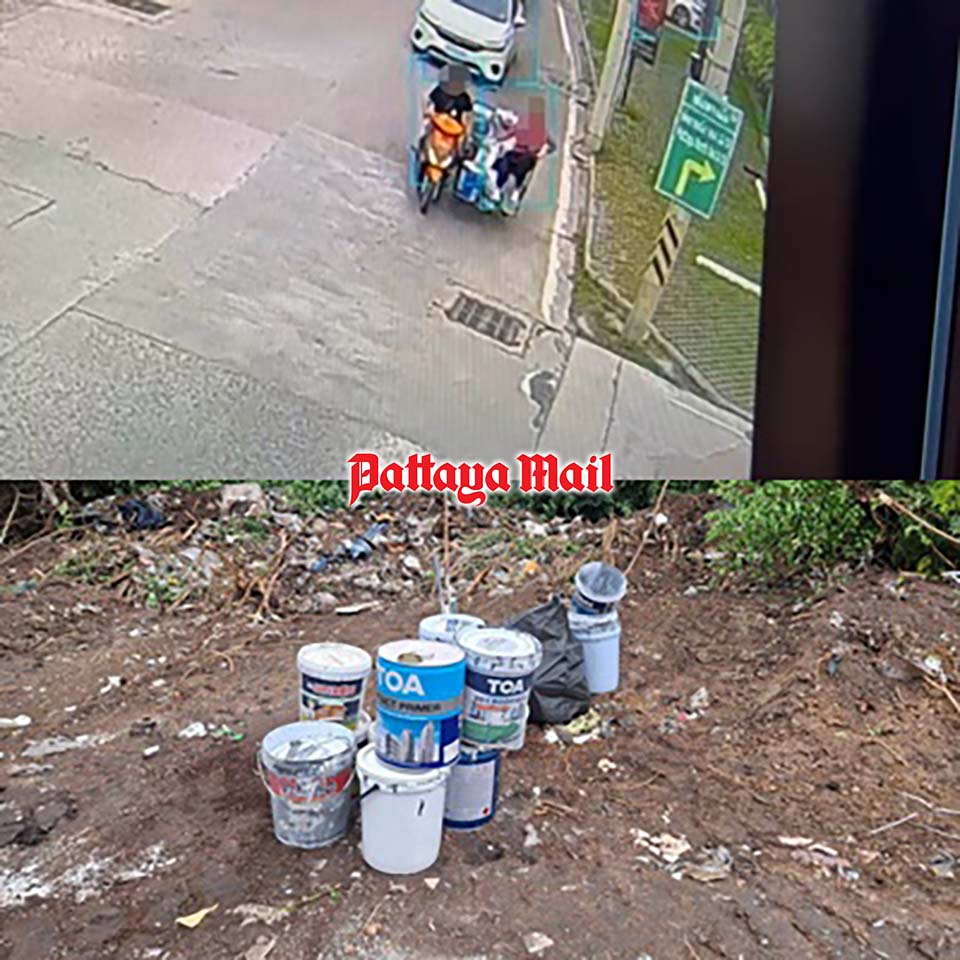 WWW.PATTAYAMAIL.COMPattaya turns surveillance footage into fines — illegal dumpers caught on cameraCaught on Camera — Pattaya’s new surveillance network helps fine illegal dumpers just hours after cleanup. PATTAYA, Thailand – The city’s growing network of CCTV cameras is proving to be more than just a security tool — it’s now helping municipal officials turn eyes in the sky into cash for civic enforcement. Pattaya City officials successfully used surveillance footage to track and penalize individuals who dumped trash illegally in public areas. After freshly clearing and trimming a forested zone on Sunday, July 27, authorities were dismayed to find it littered with new garbage just a day later. Thanks to clear images from Pattaya’s CCTV system, they were able to identify both the offenders and the exact locations. The result? Four separate fines of 2,000 baht each — totaling 8,000 baht — along with an order for the violators to remove the trash they dumped. “The cameras are up now, and it’s no longer easy to dump and disappear,” noted a city official. “This group threw their garbage just hours after cleanup ended. But we had it all on video.” Public response online has been overwhelmingly supportive, with residents praising the city’s resolve. “Excellent work! Proud of our officers,” one commenter wrote. “Even on long weekends, they don’t take a break.” Others called for more consistent monitoring and perhaps a lighter, symbolic punishment for first-time or minor offenses — “Can we give a flick on the wrist instead of a full penalty in some cases?” one user joked. Still, with eyes now watching even the green zones, the message is clear: Pattaya is not turning a blind eye to illegal dumping anymore. Trash Toss Turns Costly — Four violations, 8,000 baht in fines, and a public clean-up order follow CCTV evidence.0 Σχόλια 0 Μοιράστηκε 24 Views
WWW.PATTAYAMAIL.COMPattaya turns surveillance footage into fines — illegal dumpers caught on cameraCaught on Camera — Pattaya’s new surveillance network helps fine illegal dumpers just hours after cleanup. PATTAYA, Thailand – The city’s growing network of CCTV cameras is proving to be more than just a security tool — it’s now helping municipal officials turn eyes in the sky into cash for civic enforcement. Pattaya City officials successfully used surveillance footage to track and penalize individuals who dumped trash illegally in public areas. After freshly clearing and trimming a forested zone on Sunday, July 27, authorities were dismayed to find it littered with new garbage just a day later. Thanks to clear images from Pattaya’s CCTV system, they were able to identify both the offenders and the exact locations. The result? Four separate fines of 2,000 baht each — totaling 8,000 baht — along with an order for the violators to remove the trash they dumped. “The cameras are up now, and it’s no longer easy to dump and disappear,” noted a city official. “This group threw their garbage just hours after cleanup ended. But we had it all on video.” Public response online has been overwhelmingly supportive, with residents praising the city’s resolve. “Excellent work! Proud of our officers,” one commenter wrote. “Even on long weekends, they don’t take a break.” Others called for more consistent monitoring and perhaps a lighter, symbolic punishment for first-time or minor offenses — “Can we give a flick on the wrist instead of a full penalty in some cases?” one user joked. Still, with eyes now watching even the green zones, the message is clear: Pattaya is not turning a blind eye to illegal dumping anymore. Trash Toss Turns Costly — Four violations, 8,000 baht in fines, and a public clean-up order follow CCTV evidence.0 Σχόλια 0 Μοιράστηκε 24 Views -
 WWW.PATTAYAMAIL.COMIndian tourist’s girlfriend found safe after swimming beyond buoy line at Pattaya BeachThe 24-year-old woman was found safe after swimming beyond the designated buoy zone. PATTAYA, Thailand – A hectic search unfolded at the beach near Soi 13 in Pattaya after city officials, marine rescue teams, and lifeguards received a report from an Indian tourist about a missing 24-year-old Thai woman in the designated swimming area, July 28. Authorities quickly mobilized and conducted an urgent search. The woman was later found safe and well; she explained that she had swum beyond the buoy markers of the swimming zone and reached the shore on the other side of the beach. She is now under proper care and safe. Officials are urging tourists and locals alike to follow swimming area boundaries to ensure their own safety and that of others. Online commentators expressed mixed reactions—some praised the tireless efforts of the rescue teams during the holiday period, while others teased about the swimmer’s carelessness and reminded everyone to be cautious when swimming in the sea. In the end, the situation was resolved safely, but it serves as an important reminder for everyone to respect the rules and avoid taking unnecessary risks in public waters. Pattaya lifeguards and rescue teams act swiftly to find a missing swimmer near Soi 13. Authorities remind beachgoers to respect swimming boundaries for their own safety. Community praises rescue efforts but urges caution to avoid similar incidents.0 Σχόλια 0 Μοιράστηκε 24 Views
WWW.PATTAYAMAIL.COMIndian tourist’s girlfriend found safe after swimming beyond buoy line at Pattaya BeachThe 24-year-old woman was found safe after swimming beyond the designated buoy zone. PATTAYA, Thailand – A hectic search unfolded at the beach near Soi 13 in Pattaya after city officials, marine rescue teams, and lifeguards received a report from an Indian tourist about a missing 24-year-old Thai woman in the designated swimming area, July 28. Authorities quickly mobilized and conducted an urgent search. The woman was later found safe and well; she explained that she had swum beyond the buoy markers of the swimming zone and reached the shore on the other side of the beach. She is now under proper care and safe. Officials are urging tourists and locals alike to follow swimming area boundaries to ensure their own safety and that of others. Online commentators expressed mixed reactions—some praised the tireless efforts of the rescue teams during the holiday period, while others teased about the swimmer’s carelessness and reminded everyone to be cautious when swimming in the sea. In the end, the situation was resolved safely, but it serves as an important reminder for everyone to respect the rules and avoid taking unnecessary risks in public waters. Pattaya lifeguards and rescue teams act swiftly to find a missing swimmer near Soi 13. Authorities remind beachgoers to respect swimming boundaries for their own safety. Community praises rescue efforts but urges caution to avoid similar incidents.0 Σχόλια 0 Μοιράστηκε 24 Views -
 WWW.PATTAYAMAIL.COMForeign visitors say dual pricing in Pattaya hurts more than missing travel incentivesThai Price” hotel deals in Pattaya reignite debate over dual pricing — from bars to national parks, tourists say it’s time for change. (Photo by Jetsada Homklin) PATTAYA, Thailand — As hotels and tourism operators in Pattaya promote special “Thai Price” campaigns tied to domestic travel subsidies, foreign visitors are once again raising concerns — not about missing out on perks, but about something that’s been bothering them for years: dual pricing. While Thai citizens benefit from government-backed co-pay promotions to boost internal tourism, foreigners are left watching from the sidelines. Some even ask whether it’s possible to book through Thai friends just to avoid inflated room rates. “Should I get a local to book my hotel for October?” one visitor asked on a Pattaya travel forum. “It’s frustrating to know the guest next door is paying less for the same room.” The issue is far from new in Pattaya. From beachfront attractions to baht-buses and ticketed events, dual pricing — often with locals paying half or less than foreigners — has long been baked into the tourist economy. While some say it’s a small price to pay for paradise, others say it’s not about the baht, it’s about fairness. “It’s been going on for 30 years,” said one longtime foreign resident. “We’re used to it, but it doesn’t mean we like it.” Reactions from locals and tourists alike are mixed. Some defend the pricing model as market freedom in action. “It’s a free country,” one Pattaya resident commented. “If you don’t like the price, you don’t have to go. Businesses can charge what they want.” Others offered sarcastic suggestions: “Want to deduct your Pattaya holiday on your taxes? Better get a job where perks include beachfront write-offs — just don’t claim more than five short times and two long times a year.” Yet the growing frustration is hard to ignore. With Thailand’s baht still strong — despite political uncertainty and border tensions — many visitors feel doubly squeezed. “Why is the currency still so high while we’re paying more than locals for national parks, bars, and even boat rides?” one tourist asked. Analysts point out that Thailand imports most of its oil and energy in U.S. dollars, so weakening the baht would spike inflation — but that’s little comfort to foreign tourists staring at double standards on every price list. Some also question the broader value of stimulus programs if they shut foreigners out entirely. “Shouldn’t Thailand want long-staying tourists to feel welcome too?” one visitor wondered. “All this dual pricing is just pushing people to go next door to Vietnam.” Pattaya hoteliers, meanwhile, continue rolling out “Thai Price” deals aimed squarely at domestic travelers — often with discounts that don’t even appear on English booking sites. For some, it feels like a missed opportunity. For others, it’s a reminder that Pattaya’s charm comes with caveats. In a city that markets itself as open to the world, many long-time guests say it’s not free meals or discounted rooms they want — just the same price as everyone else.0 Σχόλια 0 Μοιράστηκε 25 Views
WWW.PATTAYAMAIL.COMForeign visitors say dual pricing in Pattaya hurts more than missing travel incentivesThai Price” hotel deals in Pattaya reignite debate over dual pricing — from bars to national parks, tourists say it’s time for change. (Photo by Jetsada Homklin) PATTAYA, Thailand — As hotels and tourism operators in Pattaya promote special “Thai Price” campaigns tied to domestic travel subsidies, foreign visitors are once again raising concerns — not about missing out on perks, but about something that’s been bothering them for years: dual pricing. While Thai citizens benefit from government-backed co-pay promotions to boost internal tourism, foreigners are left watching from the sidelines. Some even ask whether it’s possible to book through Thai friends just to avoid inflated room rates. “Should I get a local to book my hotel for October?” one visitor asked on a Pattaya travel forum. “It’s frustrating to know the guest next door is paying less for the same room.” The issue is far from new in Pattaya. From beachfront attractions to baht-buses and ticketed events, dual pricing — often with locals paying half or less than foreigners — has long been baked into the tourist economy. While some say it’s a small price to pay for paradise, others say it’s not about the baht, it’s about fairness. “It’s been going on for 30 years,” said one longtime foreign resident. “We’re used to it, but it doesn’t mean we like it.” Reactions from locals and tourists alike are mixed. Some defend the pricing model as market freedom in action. “It’s a free country,” one Pattaya resident commented. “If you don’t like the price, you don’t have to go. Businesses can charge what they want.” Others offered sarcastic suggestions: “Want to deduct your Pattaya holiday on your taxes? Better get a job where perks include beachfront write-offs — just don’t claim more than five short times and two long times a year.” Yet the growing frustration is hard to ignore. With Thailand’s baht still strong — despite political uncertainty and border tensions — many visitors feel doubly squeezed. “Why is the currency still so high while we’re paying more than locals for national parks, bars, and even boat rides?” one tourist asked. Analysts point out that Thailand imports most of its oil and energy in U.S. dollars, so weakening the baht would spike inflation — but that’s little comfort to foreign tourists staring at double standards on every price list. Some also question the broader value of stimulus programs if they shut foreigners out entirely. “Shouldn’t Thailand want long-staying tourists to feel welcome too?” one visitor wondered. “All this dual pricing is just pushing people to go next door to Vietnam.” Pattaya hoteliers, meanwhile, continue rolling out “Thai Price” deals aimed squarely at domestic travelers — often with discounts that don’t even appear on English booking sites. For some, it feels like a missed opportunity. For others, it’s a reminder that Pattaya’s charm comes with caveats. In a city that markets itself as open to the world, many long-time guests say it’s not free meals or discounted rooms they want — just the same price as everyone else.0 Σχόλια 0 Μοιράστηκε 25 Views -
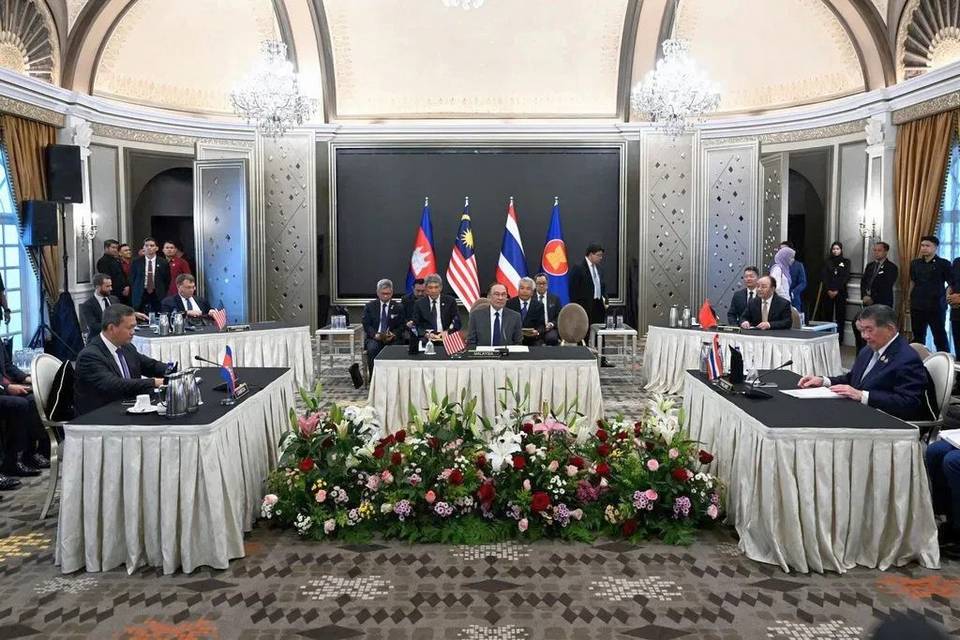 WWW.PATTAYAMAIL.COMWhat next in Thai-Cambodian border issues?The hope is that the spirit of cooperation between Thailand and Cambodia is a new dawn. EDITORIAL There is universal relief that the first, if tiny, steps have been taken in the troublesome Bangkok versus Phnom Penh de-escalation. The initial statement confirms an immediate ceasefire (technically from midnight), to be followed on the morning of July 29 by an informal meeting of army generals on both sides, plus possible involvement of Asean defence attaches. There will be Asean monitoring of the ceasefire according to most recent reports in Bangkok. A meeting of the “General Border Committee” has been set for August 4. Whether this is the same two-nation body as the hitherto named “Joint Boundary Commission”, or some kind of reincarnation with a third-party chairman, remains unclear. This body last met in June and failed to make any progress on four areas of Emerald Triangle with their ancient and hotly disputed temple sites. An encouraging feature of the acceptance speeches by acting Thai prime minister Phumtham Wechayachai and Cambodian premier Hun Manet was their thanks to both the United States and China in setting up the meeting. As expected, the White House press secretary was quick off the mark in praising Donald Trump and suggesting he be given the Nobel Peace Prize. China has yet to comment publicly about any detail. It is clear from Malaysian prime minister Anwar Ibrahim’s remarks that the 10-nation Asean bloc will operate a watching brief. Although Asean will not be directly involved in the nitty-gritty, it will act as in a quasi-independent role which neither Cambodia nor Thailand can ignore. Thus the mention of third party Asean defence attaches in the joint ceasefire communique is a positive sign. But now the hard work has to begin. There is the extremely thorny issue about procedure as Thailand believes only in two party resolution, whereas Cambodia has already referred the issue of the ancient Hindu temple of Preah Vihear to the UN’s Court of International Justice in The Hague for the third time. This now begs the question whether or not Cambodia will withdraw its request, especially as the ICJ has twice supported Cambodia over border disputes in 1962 and 2013. If not, it is difficult to see how Thailand can accept UN-related arbitration especially as she withdrew from recognizing ICJ rulings as early as 1960. The lines of control in some border regions are not precisely as they were two months ago. The Thai military has expanded its territory by occupying several mountain peaks or hills very close to disputed temples, whilst Cambodia appears to have occupied some rural districts whose ownership has been unclear for over a hundred years. A basic problem is that the two sides use different maps, some dating back to 1904 and 1907, to identify their own territory. Thus the two parties will need to agree very precisely on the removal of artillery and the withdrawal of personnel from districts which have not yet been discussed, let alone agreed on. Some will look to America and China to arbitrate if the territorial debates start becoming bitter again. But neither superpower will want to wade into the quagmire. Trump’s sole interest now will be whether the agreement sticks in the context of his warnings about 36 percent tariffs on both Thailand and Cambodia. He is not particularly close to Thailand which he has said is “drifting” towards the Chinese orbit, whilst he is intensely suspicious of China’s strong influence in Cambodia which he sees as a client state of Beijing. China won’t want the inevitable regional unpopularity if she shows bias in favour of Phnom Penh. So the best way forward is non-partisan and delicate neutrality by the Malaysian premier. As history appears to show, many ceasefires soon break down: Israel versus Hamas or Armenia versus Azerbaijan are recent examples. On the other hand, a 2025 ceasefire between nuclear states India and Pakistan has held well and there is always the example of the Korean peninsula which has avoided a full-blown wear since a 1953 ceasefire. Both Thailand and Cambodia have lots in common culturally, economically and even politically. But if historical grievances, political instability and stiff pride are centerstage, the outlook is indeed dark. Success will require compromise on both sides. Leaders of the two countries must be determined not to repeat 33 dead, 200 injured and 300,000 displaced persons. Next time, if there is one, will be much worse.0 Σχόλια 0 Μοιράστηκε 70 Views
WWW.PATTAYAMAIL.COMWhat next in Thai-Cambodian border issues?The hope is that the spirit of cooperation between Thailand and Cambodia is a new dawn. EDITORIAL There is universal relief that the first, if tiny, steps have been taken in the troublesome Bangkok versus Phnom Penh de-escalation. The initial statement confirms an immediate ceasefire (technically from midnight), to be followed on the morning of July 29 by an informal meeting of army generals on both sides, plus possible involvement of Asean defence attaches. There will be Asean monitoring of the ceasefire according to most recent reports in Bangkok. A meeting of the “General Border Committee” has been set for August 4. Whether this is the same two-nation body as the hitherto named “Joint Boundary Commission”, or some kind of reincarnation with a third-party chairman, remains unclear. This body last met in June and failed to make any progress on four areas of Emerald Triangle with their ancient and hotly disputed temple sites. An encouraging feature of the acceptance speeches by acting Thai prime minister Phumtham Wechayachai and Cambodian premier Hun Manet was their thanks to both the United States and China in setting up the meeting. As expected, the White House press secretary was quick off the mark in praising Donald Trump and suggesting he be given the Nobel Peace Prize. China has yet to comment publicly about any detail. It is clear from Malaysian prime minister Anwar Ibrahim’s remarks that the 10-nation Asean bloc will operate a watching brief. Although Asean will not be directly involved in the nitty-gritty, it will act as in a quasi-independent role which neither Cambodia nor Thailand can ignore. Thus the mention of third party Asean defence attaches in the joint ceasefire communique is a positive sign. But now the hard work has to begin. There is the extremely thorny issue about procedure as Thailand believes only in two party resolution, whereas Cambodia has already referred the issue of the ancient Hindu temple of Preah Vihear to the UN’s Court of International Justice in The Hague for the third time. This now begs the question whether or not Cambodia will withdraw its request, especially as the ICJ has twice supported Cambodia over border disputes in 1962 and 2013. If not, it is difficult to see how Thailand can accept UN-related arbitration especially as she withdrew from recognizing ICJ rulings as early as 1960. The lines of control in some border regions are not precisely as they were two months ago. The Thai military has expanded its territory by occupying several mountain peaks or hills very close to disputed temples, whilst Cambodia appears to have occupied some rural districts whose ownership has been unclear for over a hundred years. A basic problem is that the two sides use different maps, some dating back to 1904 and 1907, to identify their own territory. Thus the two parties will need to agree very precisely on the removal of artillery and the withdrawal of personnel from districts which have not yet been discussed, let alone agreed on. Some will look to America and China to arbitrate if the territorial debates start becoming bitter again. But neither superpower will want to wade into the quagmire. Trump’s sole interest now will be whether the agreement sticks in the context of his warnings about 36 percent tariffs on both Thailand and Cambodia. He is not particularly close to Thailand which he has said is “drifting” towards the Chinese orbit, whilst he is intensely suspicious of China’s strong influence in Cambodia which he sees as a client state of Beijing. China won’t want the inevitable regional unpopularity if she shows bias in favour of Phnom Penh. So the best way forward is non-partisan and delicate neutrality by the Malaysian premier. As history appears to show, many ceasefires soon break down: Israel versus Hamas or Armenia versus Azerbaijan are recent examples. On the other hand, a 2025 ceasefire between nuclear states India and Pakistan has held well and there is always the example of the Korean peninsula which has avoided a full-blown wear since a 1953 ceasefire. Both Thailand and Cambodia have lots in common culturally, economically and even politically. But if historical grievances, political instability and stiff pride are centerstage, the outlook is indeed dark. Success will require compromise on both sides. Leaders of the two countries must be determined not to repeat 33 dead, 200 injured and 300,000 displaced persons. Next time, if there is one, will be much worse.0 Σχόλια 0 Μοιράστηκε 70 Views -
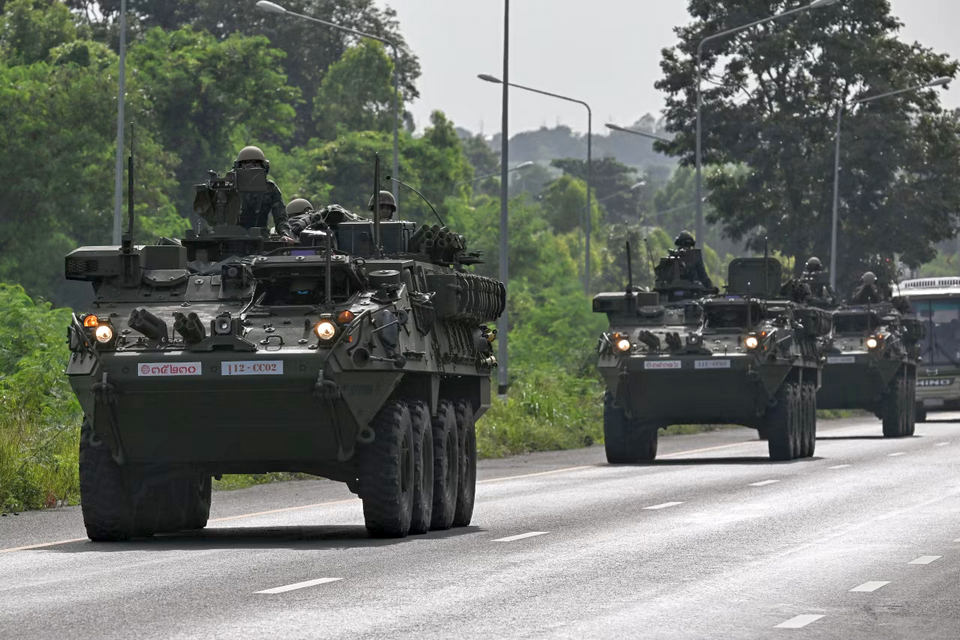 WWW.PATTAYAMAIL.COMThailand-Cambodia border clash raises concern but economic stability remains strongWhile the border clash between Thai and Cambodian forces may raise global concern, a calm assessment is essential — especially for foreign investors and long-stay residents in Thailand. This analysis looks beyond the headlines to examine Thailand’s economic fundamentals and the actual impact on the foreign community. While the border clash between Thai and Cambodian forces, may raise eyebrows globally, it is important to assess the situation calmly, especially for foreign investors and long stay residents in Thailand. This analysis offers a clear view of Thailand’s current economic fundamentals, the real impact on foreign presence in the country, and why stability remains intact for the vast majority of regions and sectors. 1. Thailand’s Economic Recovery Is Ongoing but Still Sensitive to Shocks As of mid-2025, Thailand’s economic landscape is best described as “fragile but progressing” Q2 GDP growth stands at 2.3%, below regional averages but steadily recovering from pandemic era lows. Household debt remains high at over 91% of GDP, dampening local consumption. Tourism has returned to ~75% of pre-COVID levels, with strong inflows from ASEAN and India, though China and Europe remain slower to rebound. The Thai baht remains moderately volatile, reflecting global uncertainties more than domestic fundamentals. The current border incident occurs during a delicate recovery phase and could weigh on investor sentiment if not managed with swift and clear communication. 2. Impact on Foreign Businesses, Expats, and Tourists Foreign Investors and Industrial Operators. Multinational manufacturers, especially those with facilities in Eastern Economic Corridor (EEC) provinces like Chonburi and Rayong, have not been directly affected by the border unrest. However, risk assessments are being updated, especially for industries relying on Cambodian labor or cross border logistics. Japanese, Korean, and European investors are likely to temporarily adopt a “wait-and-see” approach before further expansion. Long Stay Expats and Tourists. Popular expat hubs such as Pattaya, Chiang Mai, Phuket, and Hua Hin remain entirely peaceful and unaffected. Foreign embassies have issued routine travel advisories, not evacuation notices. Expatriates holding long term visas (LTR, Retirement, Work permits) are not impacted legally or logistically by the border situation. For now, Thailand remains a safe, functioning, and welcoming destination for foreign residents and visitors. 3. What Thailand Can and Is Likely to Do to Preserve Confidence To maintain investor and expatriate trust, the Thai government should consider. Clear, multilingual communication from government spokespersons and the Ministry of Foreign Affairs, reinforcing that this is a localized incident. Engaging directly with embassies and foreign chambers of commerce, to maintain transparency and confidence in safety and continuity. Incentivizing domestic tourism and border-area investment recovery, should disruptions to logistics persist. Closely monitoring SME sectors relying on Cambodian workers or supply chains, and offering short term labor substitution or automation support. Bottom Line: Calm, Resilience, and Opportunity “In an uncertain world, countries that manage their crises with transparency and stability will emerge stronger.” Thailand’s core economic zones, infrastructure, and institutions remain unaffected by the border tensions. If managed properly, this episode may ultimately strengthen Thailand’s reputation for resilience, diplomacy, and long term investment security in Southeast Asia. For foreign investors and long-stay residents, the message is clear Thailand is still open, stable, and moving forward. Victor Wong (Peerasan Wongsri) Victor Law Pattaya/Finance & Tax Expert Email: <[email protected]> Tel. 062-87954140 Σχόλια 0 Μοιράστηκε 95 Views
WWW.PATTAYAMAIL.COMThailand-Cambodia border clash raises concern but economic stability remains strongWhile the border clash between Thai and Cambodian forces may raise global concern, a calm assessment is essential — especially for foreign investors and long-stay residents in Thailand. This analysis looks beyond the headlines to examine Thailand’s economic fundamentals and the actual impact on the foreign community. While the border clash between Thai and Cambodian forces, may raise eyebrows globally, it is important to assess the situation calmly, especially for foreign investors and long stay residents in Thailand. This analysis offers a clear view of Thailand’s current economic fundamentals, the real impact on foreign presence in the country, and why stability remains intact for the vast majority of regions and sectors. 1. Thailand’s Economic Recovery Is Ongoing but Still Sensitive to Shocks As of mid-2025, Thailand’s economic landscape is best described as “fragile but progressing” Q2 GDP growth stands at 2.3%, below regional averages but steadily recovering from pandemic era lows. Household debt remains high at over 91% of GDP, dampening local consumption. Tourism has returned to ~75% of pre-COVID levels, with strong inflows from ASEAN and India, though China and Europe remain slower to rebound. The Thai baht remains moderately volatile, reflecting global uncertainties more than domestic fundamentals. The current border incident occurs during a delicate recovery phase and could weigh on investor sentiment if not managed with swift and clear communication. 2. Impact on Foreign Businesses, Expats, and Tourists Foreign Investors and Industrial Operators. Multinational manufacturers, especially those with facilities in Eastern Economic Corridor (EEC) provinces like Chonburi and Rayong, have not been directly affected by the border unrest. However, risk assessments are being updated, especially for industries relying on Cambodian labor or cross border logistics. Japanese, Korean, and European investors are likely to temporarily adopt a “wait-and-see” approach before further expansion. Long Stay Expats and Tourists. Popular expat hubs such as Pattaya, Chiang Mai, Phuket, and Hua Hin remain entirely peaceful and unaffected. Foreign embassies have issued routine travel advisories, not evacuation notices. Expatriates holding long term visas (LTR, Retirement, Work permits) are not impacted legally or logistically by the border situation. For now, Thailand remains a safe, functioning, and welcoming destination for foreign residents and visitors. 3. What Thailand Can and Is Likely to Do to Preserve Confidence To maintain investor and expatriate trust, the Thai government should consider. Clear, multilingual communication from government spokespersons and the Ministry of Foreign Affairs, reinforcing that this is a localized incident. Engaging directly with embassies and foreign chambers of commerce, to maintain transparency and confidence in safety and continuity. Incentivizing domestic tourism and border-area investment recovery, should disruptions to logistics persist. Closely monitoring SME sectors relying on Cambodian workers or supply chains, and offering short term labor substitution or automation support. Bottom Line: Calm, Resilience, and Opportunity “In an uncertain world, countries that manage their crises with transparency and stability will emerge stronger.” Thailand’s core economic zones, infrastructure, and institutions remain unaffected by the border tensions. If managed properly, this episode may ultimately strengthen Thailand’s reputation for resilience, diplomacy, and long term investment security in Southeast Asia. For foreign investors and long-stay residents, the message is clear Thailand is still open, stable, and moving forward. Victor Wong (Peerasan Wongsri) Victor Law Pattaya/Finance & Tax Expert Email: <[email protected]> Tel. 062-87954140 Σχόλια 0 Μοιράστηκε 95 Views -
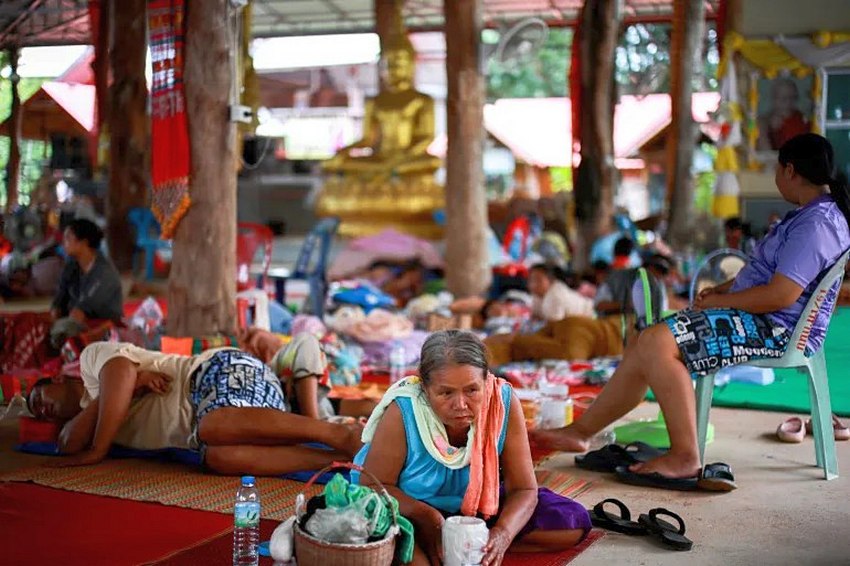 WWW.PATTAYAMAIL.COMThai Senate warns linking Cambodian ceasefire to a Trumpian trade dealThai refugees shelter from Cambodian artillery and rockets. (Photo: courtesy of Reuters) The Senate committee on military and national security has criticized any move to use economic negotiations as an inducement to end border disputes with Cambodia. The acting prime minister of Thailand and the Cambodian premier meet later today in Malaysia after Trump cited an end to military action as a prerequisite to, maybe, reducing 36 percent tariffs on Thai and Cambodian exports to US due August 1. Chaiyong Maneerungsakul, Senate committee spokesman, told Bangkok Post that taxation matters should not be entangled with armed conflict between the two neighbors. He expressed concern that Trump’s golf club remarks could be interpreted as indirect coercion and suggested extreme caution when dealing with third parties such as the American or Chinese government. Cambodia, in advance of the Malaysian meeting, has stated a ceasefire should not have military preconditions. But the Thai government has said it wants to see positive proof that Cambodia is serious about de-escalation by withdrawing her troops and artillery from contested border areas. Diplomats say that the process is complicated and unlikely to be resolved in one short meeting. Meanwhile, the clock ticks inexorably towards Trump’s time deadline. The Thai position is that the Joint Boundary Commission (JBC) is the right place to seek a territorial solution. However, Cambodia chose unilaterally to refer the dispute to the International Court of Justice (ICJ) in Holland on the very day, May 29, that the JBC meeting was held. Phnom Penh is well aware that Thailand does not accept as binding all ICJ judgments, the same position held by US, Israel, Russia, China, UK and others in other controversies. Both sides deny being the first to open fire in the current spats which began in late May. But Thai military officers say that Cambodian civilians persisted with provocative acts such as singing their national anthem and hoisting Cambodian flags at controversial temple sites. Meanwhile, ex-Cambodian prime minister Hun Sen leaked details of a confidential phone call and lost revenue from scam centers and casinos when the Thai military closed the borders. In the last few weeks, there have been multiple deaths and injuries of soldiers and civilians on both sides, whilst tit-for-tat measures have been stepped up. These have included downgrading diplomatic relations and withdrawing electricity supplies and wifi connections at land borders. A spokesperson for Marco Rubio, the US secretary of state, said he was waiting to hear the results of the meeting between the Thai and Cambodian leaders later today. He denied that the two countries were being forced into a settlement as Trump has confirmed that both Bangkok and Phnom Penh were keen to end hostilities. Critics say Trump followed a similar bargaining strategy, which failed, in the ongoing war between Russia and Ukraine.0 Σχόλια 0 Μοιράστηκε 93 Views
WWW.PATTAYAMAIL.COMThai Senate warns linking Cambodian ceasefire to a Trumpian trade dealThai refugees shelter from Cambodian artillery and rockets. (Photo: courtesy of Reuters) The Senate committee on military and national security has criticized any move to use economic negotiations as an inducement to end border disputes with Cambodia. The acting prime minister of Thailand and the Cambodian premier meet later today in Malaysia after Trump cited an end to military action as a prerequisite to, maybe, reducing 36 percent tariffs on Thai and Cambodian exports to US due August 1. Chaiyong Maneerungsakul, Senate committee spokesman, told Bangkok Post that taxation matters should not be entangled with armed conflict between the two neighbors. He expressed concern that Trump’s golf club remarks could be interpreted as indirect coercion and suggested extreme caution when dealing with third parties such as the American or Chinese government. Cambodia, in advance of the Malaysian meeting, has stated a ceasefire should not have military preconditions. But the Thai government has said it wants to see positive proof that Cambodia is serious about de-escalation by withdrawing her troops and artillery from contested border areas. Diplomats say that the process is complicated and unlikely to be resolved in one short meeting. Meanwhile, the clock ticks inexorably towards Trump’s time deadline. The Thai position is that the Joint Boundary Commission (JBC) is the right place to seek a territorial solution. However, Cambodia chose unilaterally to refer the dispute to the International Court of Justice (ICJ) in Holland on the very day, May 29, that the JBC meeting was held. Phnom Penh is well aware that Thailand does not accept as binding all ICJ judgments, the same position held by US, Israel, Russia, China, UK and others in other controversies. Both sides deny being the first to open fire in the current spats which began in late May. But Thai military officers say that Cambodian civilians persisted with provocative acts such as singing their national anthem and hoisting Cambodian flags at controversial temple sites. Meanwhile, ex-Cambodian prime minister Hun Sen leaked details of a confidential phone call and lost revenue from scam centers and casinos when the Thai military closed the borders. In the last few weeks, there have been multiple deaths and injuries of soldiers and civilians on both sides, whilst tit-for-tat measures have been stepped up. These have included downgrading diplomatic relations and withdrawing electricity supplies and wifi connections at land borders. A spokesperson for Marco Rubio, the US secretary of state, said he was waiting to hear the results of the meeting between the Thai and Cambodian leaders later today. He denied that the two countries were being forced into a settlement as Trump has confirmed that both Bangkok and Phnom Penh were keen to end hostilities. Critics say Trump followed a similar bargaining strategy, which failed, in the ongoing war between Russia and Ukraine.0 Σχόλια 0 Μοιράστηκε 93 Views -
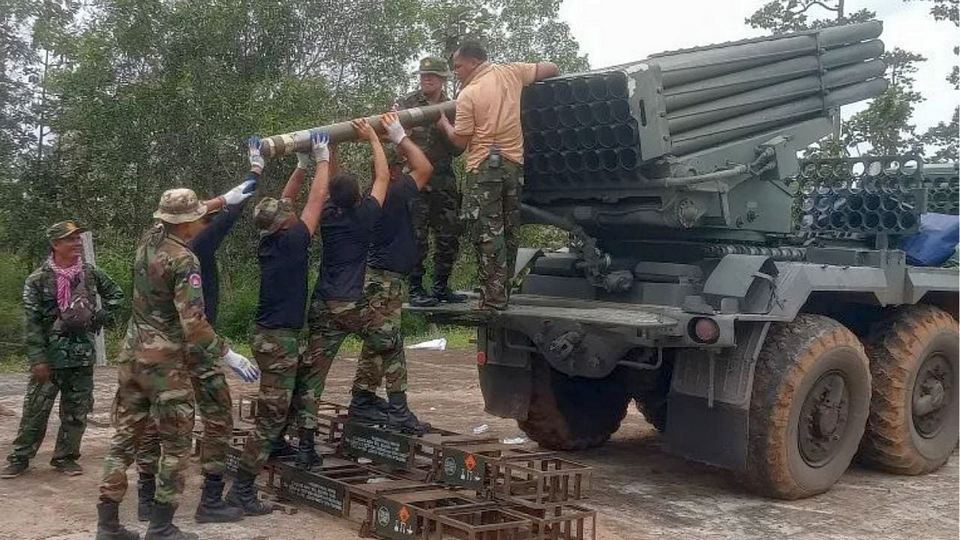 WWW.PATTAYAMAIL.COMThailand–Cambodia border conflict the true cost behind the bombsWhile headlines highlight border skirmishes and political rhetoric, the true impact of the Thai-Cambodian clash runs deeper — within the complex web of regional trade, taxation policy, supply chains, and foreign investor confidence. While the headlines focus on the border skirmishes and political rhetoric, the true impact of the Thai-Cambodian clash lies deeper within the intricate web of regional trade, taxation policy, supply chains, and foreign investor confidence. As of July 24, 2025, what began as a localized military engagement has swiftly evolved into a transnational economic risk affecting not only border communities but the entire Eastern Economic Corridor (EEC), ASEAN logistics networks, and Thailand’s export-import architecture. Border Bombs, Broken Borders Logistics at Risk The immediate economic casualty is cross-border trade. The Thai-Cambodian border sees an average of 16 billion baht in bilateral trade per month, with Surin, Sa Kaeo, and Ubon Ratchathani acting as key logistics nodes for agricultural commodities, construction materials, and consumer goods. As of now: All checkpoints have been closed indefinitely, disrupting overland cargo shipments. Thai SMEs relying on raw materials (e.g., timber, cassava, garments from Cambodia) now face delayed production. Cambodian exporters of low-cost labor-intensive goods especially to Thai border processing zones are cut off. This disruption may cause a 2–3% quarterly contraction in border-dependent industries if tensions continue past August. Tax Revenue and Customs Fallout Thailand’s Customs Department collects substantial excise and import duties from overland trade with Cambodia mainly on fuel, alcohol, processed food, and machinery. With cross-border movement halted, an estimated loss of 1.2–1.5 billion baht per month in customs revenue is projected. VAT refund delays are expected to increase for exporters operating under AFTA and bilateral trade agreements, affecting liquidity of Thai traders. Special Economic Zones (SEZs) along the border, granted incentives under BOI and IEAT regulations, face operational paralysis and possible downgrade in investment attractiveness. Investor Confidence and Capital Flight The Stock Exchange of Thailand (SET) experienced a minor dip on the morning of July 24, particularly in logistics, retail, and regional banking sectors. But the real risk is foreign direct investment (FDI) Cambodia has increasingly been part of Thailand’s “China+1” strategy, where Thai firms establish low-cost factories in Cambodia to serve as subcontracting arms. Multinationals, especially in textiles and electronics, are now reconsidering Cambodian operations, while risk-averse capital may pivot to Vietnam or Indonesia. Thailand’s Eastern Economic Corridor (EEC), which banks on regional connectivity and multimodal logistics, now faces reputational risks as a “frontline logistics hub.” Tariff and Trade Policy Implications Beyond physical disruption, the conflict undermines trust in long-term tariff cooperation under ASEAN Trade in Goods Agreement (ATIGA) and Cambodia-Thailand Bilateral Framework. Cambodian authorities are likely to impose retaliatory import restrictions or delay cargo clearance of Thai goods. Thai exporters of construction materials, processed food, and household items may lose market share to Vietnamese and Chinese competitors in Phnom Penh and Siem Reap. Longer term, trade facilitation policies such as “National Single Window” integration and preferential duty waivers may be paused or revised. Conclusion: Short-Term Volatility, Long-Term Realignment While central banks and finance ministries may downplay the macro impact, the Thai-Cambodian conflict exposes the fragility of regional trade interdependence without robust conflict buffers. If the situation escalates beyond two weeks, Thailand risks: Losing ground as a preferred hub for regional value chains. A downgrade in ease-of-doing-business metrics, particularly for border-related sectors. Postponement or redirection of FDI flows, especially from Japanese and Korean firms. In a world where “geopolitical risk” is now embedded into financial modeling, the lesson is clear: bombs may explode at the borders, but the real damage detonates in spreadsheets, tax ledgers, and investor dashboards. Victor Wong (Peerasan Wongsri) Victor Law Pattaya/Finance & Tax Expert Email: <[email protected]> Tel. 062-87954140 Σχόλια 0 Μοιράστηκε 92 Views
WWW.PATTAYAMAIL.COMThailand–Cambodia border conflict the true cost behind the bombsWhile headlines highlight border skirmishes and political rhetoric, the true impact of the Thai-Cambodian clash runs deeper — within the complex web of regional trade, taxation policy, supply chains, and foreign investor confidence. While the headlines focus on the border skirmishes and political rhetoric, the true impact of the Thai-Cambodian clash lies deeper within the intricate web of regional trade, taxation policy, supply chains, and foreign investor confidence. As of July 24, 2025, what began as a localized military engagement has swiftly evolved into a transnational economic risk affecting not only border communities but the entire Eastern Economic Corridor (EEC), ASEAN logistics networks, and Thailand’s export-import architecture. Border Bombs, Broken Borders Logistics at Risk The immediate economic casualty is cross-border trade. The Thai-Cambodian border sees an average of 16 billion baht in bilateral trade per month, with Surin, Sa Kaeo, and Ubon Ratchathani acting as key logistics nodes for agricultural commodities, construction materials, and consumer goods. As of now: All checkpoints have been closed indefinitely, disrupting overland cargo shipments. Thai SMEs relying on raw materials (e.g., timber, cassava, garments from Cambodia) now face delayed production. Cambodian exporters of low-cost labor-intensive goods especially to Thai border processing zones are cut off. This disruption may cause a 2–3% quarterly contraction in border-dependent industries if tensions continue past August. Tax Revenue and Customs Fallout Thailand’s Customs Department collects substantial excise and import duties from overland trade with Cambodia mainly on fuel, alcohol, processed food, and machinery. With cross-border movement halted, an estimated loss of 1.2–1.5 billion baht per month in customs revenue is projected. VAT refund delays are expected to increase for exporters operating under AFTA and bilateral trade agreements, affecting liquidity of Thai traders. Special Economic Zones (SEZs) along the border, granted incentives under BOI and IEAT regulations, face operational paralysis and possible downgrade in investment attractiveness. Investor Confidence and Capital Flight The Stock Exchange of Thailand (SET) experienced a minor dip on the morning of July 24, particularly in logistics, retail, and regional banking sectors. But the real risk is foreign direct investment (FDI) Cambodia has increasingly been part of Thailand’s “China+1” strategy, where Thai firms establish low-cost factories in Cambodia to serve as subcontracting arms. Multinationals, especially in textiles and electronics, are now reconsidering Cambodian operations, while risk-averse capital may pivot to Vietnam or Indonesia. Thailand’s Eastern Economic Corridor (EEC), which banks on regional connectivity and multimodal logistics, now faces reputational risks as a “frontline logistics hub.” Tariff and Trade Policy Implications Beyond physical disruption, the conflict undermines trust in long-term tariff cooperation under ASEAN Trade in Goods Agreement (ATIGA) and Cambodia-Thailand Bilateral Framework. Cambodian authorities are likely to impose retaliatory import restrictions or delay cargo clearance of Thai goods. Thai exporters of construction materials, processed food, and household items may lose market share to Vietnamese and Chinese competitors in Phnom Penh and Siem Reap. Longer term, trade facilitation policies such as “National Single Window” integration and preferential duty waivers may be paused or revised. Conclusion: Short-Term Volatility, Long-Term Realignment While central banks and finance ministries may downplay the macro impact, the Thai-Cambodian conflict exposes the fragility of regional trade interdependence without robust conflict buffers. If the situation escalates beyond two weeks, Thailand risks: Losing ground as a preferred hub for regional value chains. A downgrade in ease-of-doing-business metrics, particularly for border-related sectors. Postponement or redirection of FDI flows, especially from Japanese and Korean firms. In a world where “geopolitical risk” is now embedded into financial modeling, the lesson is clear: bombs may explode at the borders, but the real damage detonates in spreadsheets, tax ledgers, and investor dashboards. Victor Wong (Peerasan Wongsri) Victor Law Pattaya/Finance & Tax Expert Email: <[email protected]> Tel. 062-87954140 Σχόλια 0 Μοιράστηκε 92 Views
και άλλες ιστορίες





